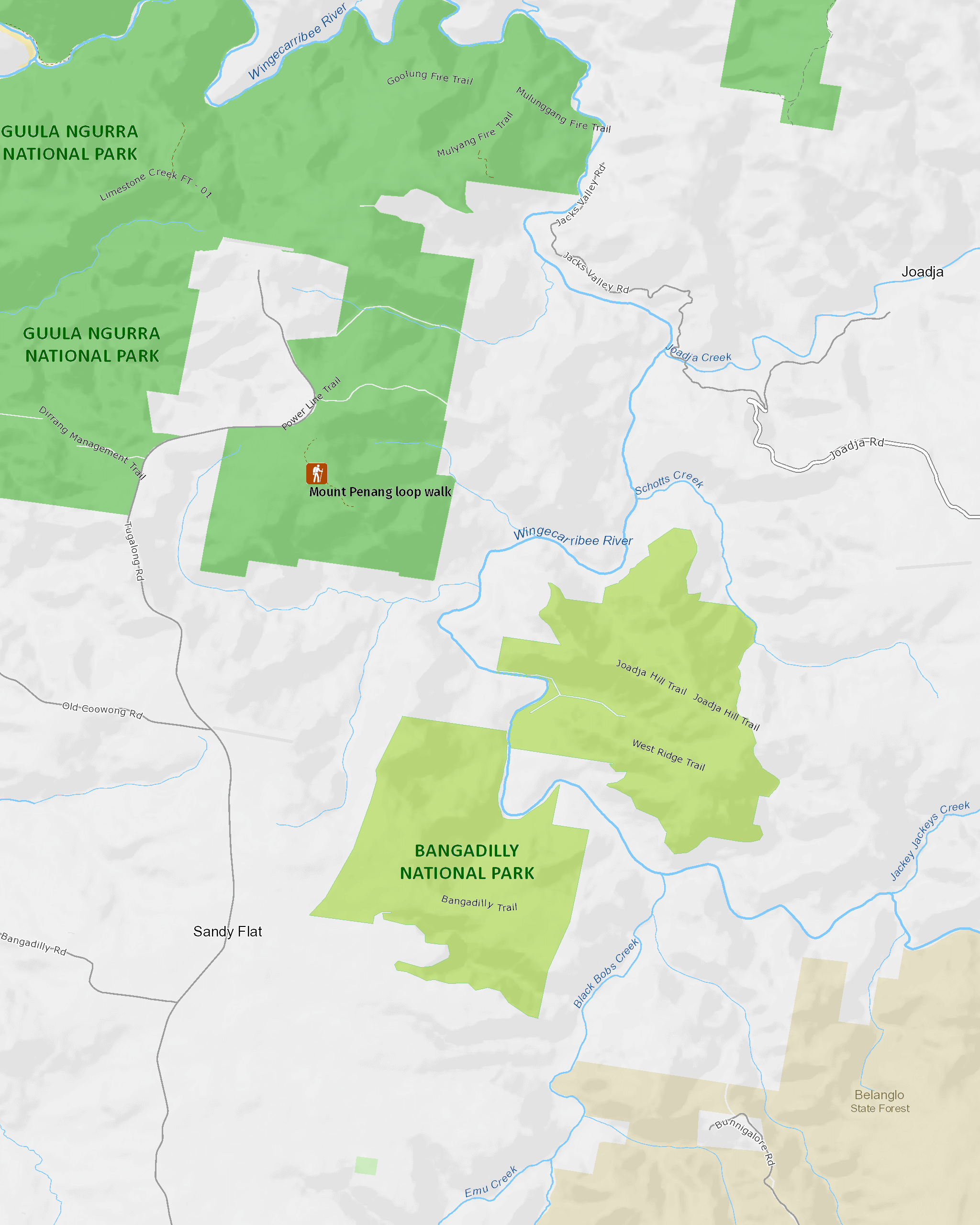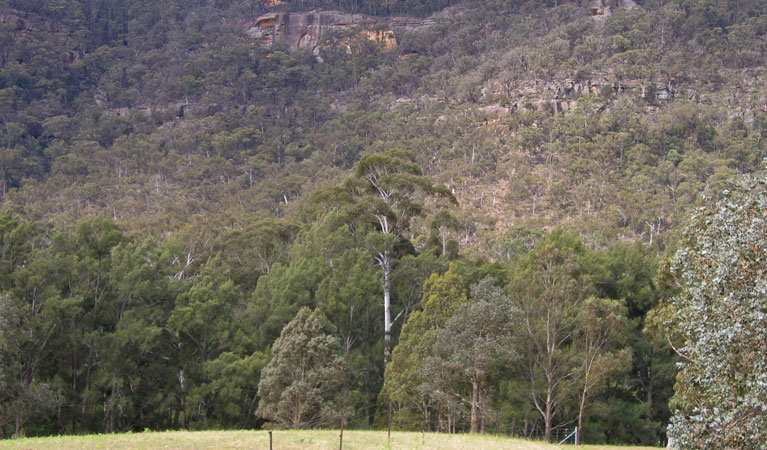Bangadilly National Park
Overview
Located 20km from Bowral in the Southern Highlands of NSW at Canyonleigh, Bangadilly National Park offers opportunities for remote wilderness hiking, wildlife photography and birdwatching.
Read more about Bangadilly National Park
Although easily accessible from nearby Bowral, Bangadilly National Park is relatively untraversed by visitors, making it a great place to get away from the workaday world and feel like you’ve escaped into a remote wilderness paradise.
It’s an ideal park for independent adventurers who are comfortable making their own way around firetrails and unmarked walks with the help of a good map. You’ll be rewarded with great hiking to scenic lookouts with enjoyable birdwatching, wildlife photography opportunities and potential picnic spots dotted all along the way.
Enjoy panoramic views out across the striking Wingecarribe River valley. Other special sights you may be treated to here include platypus paddling along the riverbanks, koalas cuddling up to forest gums, or peregrine falcons soaring across the skyline.
Open forest and woodlands line the dry ridges and slopes while forests of red stringbark, brittle gum, apple box and river peppermint tower in the sheltered valleys and along the riverbanks.
Local alerts
For the latest updates on fires, closures and other alerts in this area, see https://www.nationalparks.nsw.gov.au/visit-a-park/parks/bangadilly-national-park/local-alerts
Contact
- in the Country NSW region
Bangadilly National Park is always open but may have to close at times due to poor weather or fire danger.
-
-
Glenbrook office
02 4720 6200
Contact hours: Entry station is only open on weekends, public holidays and school holidays. - 68 Bruce Road, Glenbrook NSW 2773
-
Email: npws.hawkesburynattai@environment.nsw.gov.au
-
Glenbrook office
Visitor info
All the practical information you need to know about Bangadilly National Park.
Map

Map legend

Maps and downloads
Nearby towns
Bowral (53 km)
Spring is tulip time while summer has fragrant roses and autumn, flowering bulbs. Bowral Tulip Festival runs from the end of September until early October; the Autumn Garden Festival is held in May.
Goulburn (76 km)
Named after Henry Goulburn - the British Secretary of State for the Colonies, Goulburn developed into a major centre for wool, and in 1863, it became Australia's first inland city. Today, the town is a rich hub of history, discovery and natural beauty.
Sydney City Centre (171 km)
No trip to Sydney is complete without spending some time in the city’s beautiful parks. Whether it’s in central areas like Hyde Park or the Royal Botanic Gardens or further out in Centennial Parklands, there’s plenty of green space to go out and enjoy.
Learn more
Bangadilly National Park is a special place. Here are just some of the reasons why:
Spot rare, threatened species

There are many unusual species to be spotted in the park, including several species of arboreal mammals or, more simply put, mammals that live in trees, such as koalas, squirrels and greater gliders. Keep your eyes out for platypus down along the riverbanks and look up high to spot interesting birds and bats, such as Peregrine falcons, glossy black cockatoos, spotted-tailed quolls, and large-eared pied bats.
Geological wonders

One of the best things about visiting Bangadilly is the chance to stroll through its impressive and varied vegetation, which includes open forest and woodlands on the dry ridges and slopes of the park and majestic forests nestling in the sheltered valleys and all along the riverbanks. The park's unique and striking plant life made up of two distinct types, Sydney Basin and Tablelands, each with its own quite unique beauty. The park's distinctive geology consists of three sections of plateau country bounded by steep escarpments and rocky gullies that drop dramatically into valleys along Wingecarribee River. Mount Penang and other rocky outcrops on the ends of the ridges provide spectacular views of Wingecarribee River valley.
Lands of the Gundungurra Aboriginal People

Bangadilly National Park lies at the heart of the territory of the Gundungurra Aboriginal People, whose traditional land extends all the way from Lithgow to Goulburn. Other groups with associations to the area are the Dharug to the north, Dharawal to the east and Wiradjuri to the west. The Wingecarribee River valley, with its permanent water source and diverse plant and animal resources, is likely to have been important to all of these tribes as both a living area and travel route. The junction of the Wingecarribee and Wollondilly rivers, just downstream from the park, is also known to be of great significance in Aboriginal mythology.
Bangadilly National Park lies within the Gundungurra Indigenous Land Use Agreement (ILUA) area. The Gundungurra ILUA covers 6942 square kilometres of Country where NPWS and Gundungurra People work together to identify, manage and protect cultural sites and values.
Plants and animals protected in this park
Animals
-

Koala (Phascolarctos cinereus)
One of the most renowned Australian animals, the tree-dwelling marsupial koala can be found in gum tree forests and woodlands across eastern NSW, Victoria and Queensland, as well as in isolated regions in South Australia. With a vice-like grip, this perhaps most iconic but endangered Australian animal lives in tall eucalypts within a home range of several hectares.
Education resources (1)
What we're doing
Bangadilly National Park has management strategies in place to protect and conserve the values of this park. View the detailed park and fire management documents.

